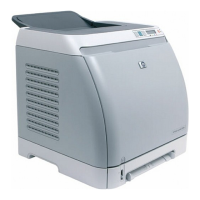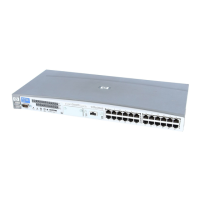'/file2'=2; /* file 2 is backed up by the second sapback */
'/file3'=1; /* file 3 is backed up by the first sapback */
'/file4'=1;
}
}
Setting, retrieving, listing, and deleting Data Protector SAP R/3
configuration file parameters using the CLI
The Data Protector SAP R/3 configuration file parameters are normally written to the
Data Protector SAP R/3 configuration file after:
• the Data Protector configuration of the Oracle instance that is run by SAP R/3 is
completed.
• a new backup specification is created.
• a backup that uses balancing by time algorithm is completed.
The util_cmd command
You can set, retrieve, list, or delete the Data Protector SAP R/3 configuration file
parameters using the util_cmd -putopt (setting a parameter), util_cmd
-getopt (retrieving a parameter), or util_cmd -getconf (listing all parameters)
command on the Data Protector SAP R/3 client. The command resides in the
Data_Protector_home\bin (Windows systems) or /opt/omni/lbin (HP-UX,
Solaris systems) directory.
Cluster-aware clients
In a cluster environment, the environment variable OB2BARHOSTNAME must be defined
as the virtual hostname before running the util_cmd command from the command
line (on the client). The OB2BARHOSTNAME variable is set as follows:
• On UNIX: export OB2BARHOSTNAME=virtual_hostname
• On Windows: set OB2BARHOSTNAME=virtual_hostname
The util_cmd synopsis
The syntax of the util_cmd command is as follows:
util_cmd -getconf[ig] SAP oracle_instance [-local filename]
util_cmd -getopt[ion] [SAP oracle_instance] option_name
[-sub[list] sublist_name] [-local filename]
Data Protector SAP R/3 ZDB integration170

